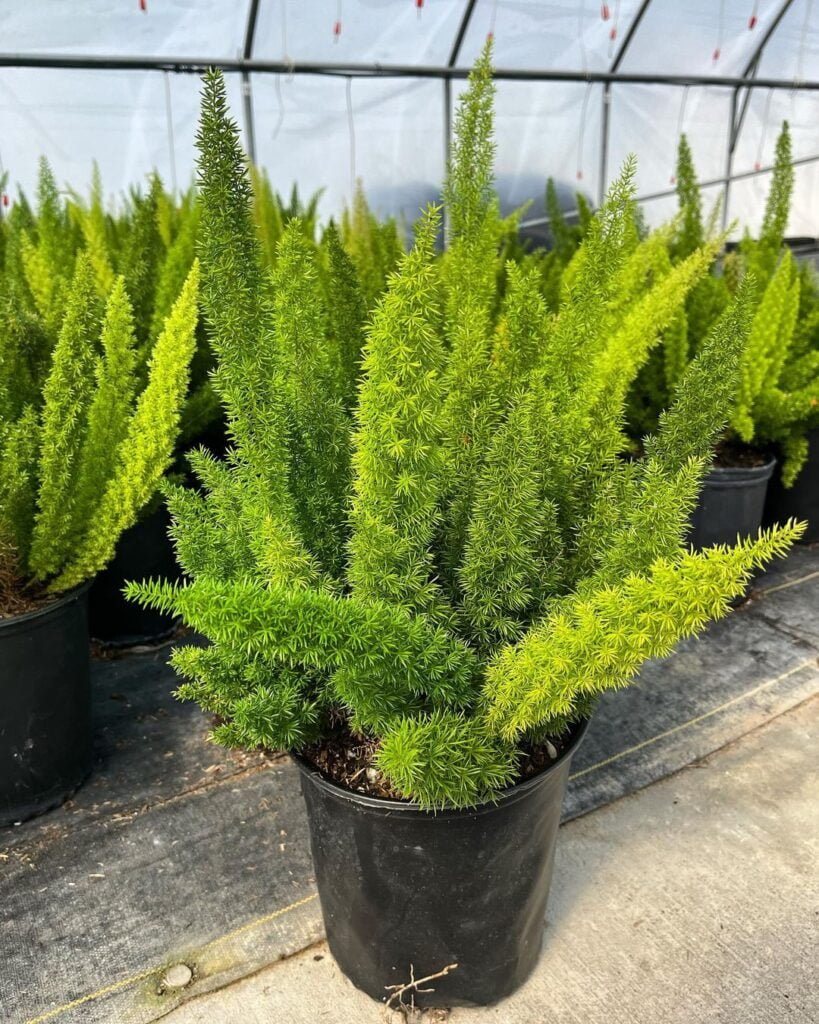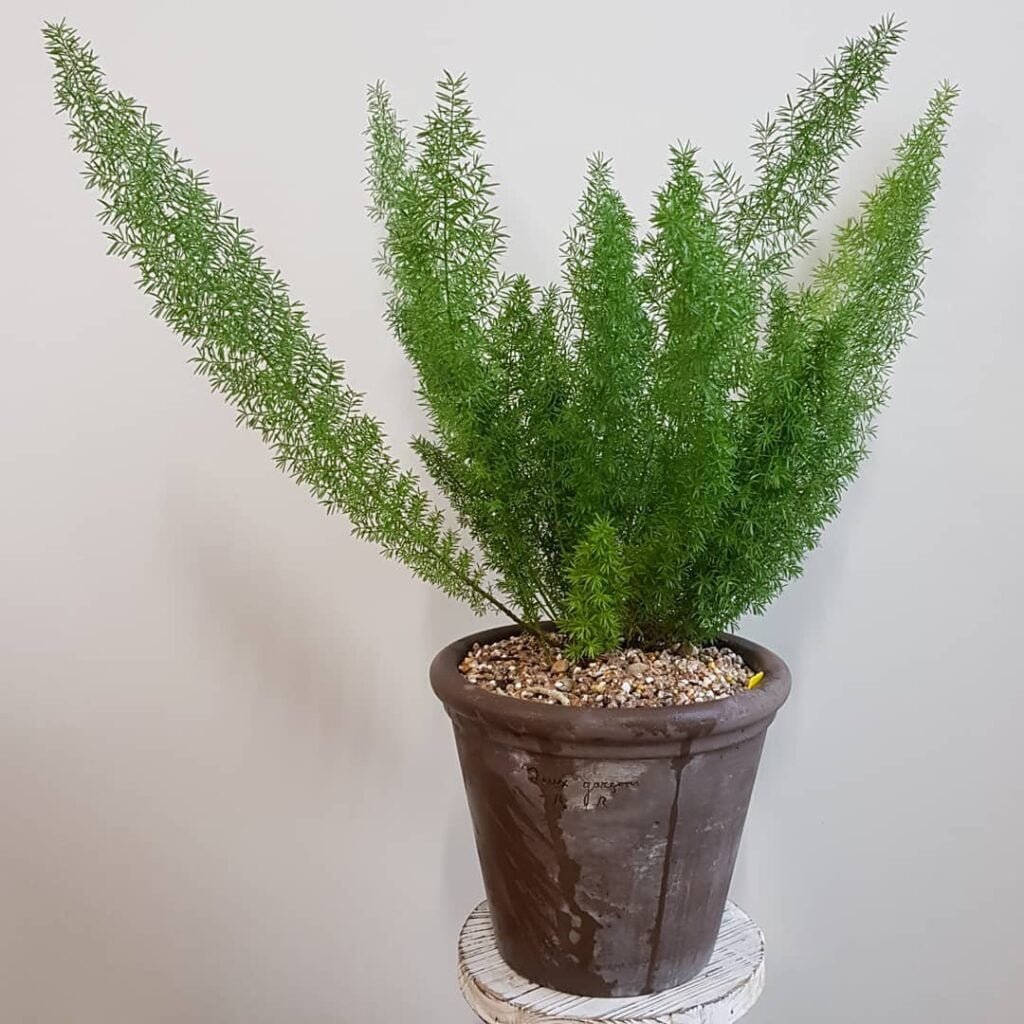Discover everything you need to know about growing and caring for foxtail fern with our comprehensive guide. Learn essential tips on planting, watering, pruning and maintaining these unique and elegant ferns for a vibrant and thriving garden.
Are you looking to add a touch of elegance and texture to your indoor garden? Look no further than the striking foxtail fern! This unique, fluffy plant is a true showstopper that’s sure to turn heads. With its soft, feathery fronds and easy care requirements, it’s no wonder the foxtail fern has become a favorite among plant enthusiasts.
Here’s an information chart for the Foxtail Fern, known botanically as Asparagus densiflorus ‘Myers’:
| Attribute | Details |
|---|---|
| Botanical Name | Asparagus densiflorus ‘Myers’ |
| Common Name | Foxtail Fern, Myers Fern |
| Plant Family | Asparagaceae |
| Hardiness Zone | USDA zones 9-11 |
| Sun Exposure | Partial shade to full sun |
| Soil Type | Well-drained, sandy or loamy soil |
| Watering | Moderate; allow top inch of soil to dry out between waterings |
| Growth Habit | Clumping perennial |
| Height/Spread | 2-3 feet tall / 2-3 feet wide |
| Special Features | Arching, feathery plumes, drought-tolerant once established, suitable for containers and landscapes |
In this comprehensive guide, we’ll dive deep into the world of foxtail ferns, covering everything from their origins and characteristics to tips for growing and caring for these delightful beauties. Get ready to become a foxtail fern pro!
What is a Foxtail Fern?

Before we get into the nitty-gritty of caring for these plants, let’s start with the basics. The foxtail fern (scientific name: Asparagus aethiopicus) is a member of the Asparagaceae family, which also includes edible asparagus. Despite its common name, it’s not a true fern but rather a flowering perennial plant.
Native to South Africa, the foxtail fern is prized for its unique, fuzzy foliage that resembles little bottlebrushes or well, foxtails! These soft, feathery fronds arch gracefully, adding a touch of whimsy and texture to any indoor space.
Growing Foxtail Ferns: What You Need to Know

Now that you know a little bit about this captivating plant, let’s dive into the specifics of growing and caring for foxtail ferns.
Light Requirements
Foxtail ferns thrive in bright, indirect light. While they can tolerate some direct sun, too much intense light can scorch their delicate fronds. An ideal spot would be near an east or west-facing window, or in a spot with filtered sunlight.
Water Needs
Like most houseplants, foxtail ferns prefer a balance when it comes to water. Allow the top inch or two of soil to dry out between waterings, then give the plant a thorough soak. Avoid letting the soil dry out completely, as this can cause the fronds to become crispy and brown.
Humidity
As tropical plants, foxtail ferns appreciate a humid environment. If your home tends to be on the drier side, consider placing a humidifier nearby or setting the plant on a pebble tray filled with water. Misting the fronds can also help increase humidity levels.
Soil and Fertilizer

Foxtail ferns thrive in a well-draining potting mix formulated for houseplants. A blend of peat moss, perlite, and compost works well. During the growing season (spring and summer), feed your plant with a balanced, water-soluble fertilizer every 4-6 weeks.
Temperature and Drafts
These plants prefer warm temperatures between 65-75°F (18-24°C). Avoid placing them near drafty windows or doors, as sudden temperature changes can stress the plant.
Pruning and Grooming
To keep your foxtail fern looking its best, regular grooming is a must. Use clean scissors or pruners to trim away any yellowed, damaged, or unsightly fronds. This will encourage new, lush growth.
Repotting and Propagation
Foxtail ferns are relatively slow-growing, so they don’t need to be repotted too frequently. Generally, repot every 2-3 years in the spring, moving to a pot just one size larger. These plants can also be easily propagated from stem cuttings or division.
Common Problems and Solutions
While generally easy to care for, foxtail ferns can sometimes run into a few issues. Here are some common problems and their solutions:
Brown, Crispy Fronds : This is usually a sign of underwatering or low humidity. Increase watering and consider using a humidifier or pebble tray.
Yellowing Fronds: Yellowing fronds can indicate overwatering, poor drainage, or nutrient deficiency. Allow the soil to dry out more between waterings, ensure proper drainage, and fertilize as needed.
Leggy Growth : If your foxtail fern is looking sparse and leggy, it’s likely not getting enough light. Move it to a brighter spot and prune back the leggy growth.
Pest Problems: Like many houseplants, foxtail ferns can occasionally fall victim to pests like spider mites, mealybugs, or scale insects. Regular inspection and treatment with insecticidal soap or neem oil can help keep these pests at bay.
Foxtail Fern Varieties and Cultivars

While the classic foxtail fern (Asparagus aethiopicus) is the most common variety, there are a few other cultivars to consider:
- Asparagus densiflorus ‘Sprengeri’: Also known as the Sprenger Asparagus Fern, this variety has longer, more arching fronds.
- Asparagus densiflorus ‘Myers’: The Myers Asparagus Fern has a compact, bushy habit and dense foliage.
- Asparagus setaceus: The Plumosa or Pyramid Fern has flat, feathery fronds arranged in a pyramidal shape.
Using Foxtail Ferns in Decor
With their soft, textural fronds and graceful arching habit, foxtail ferns make beautiful accent plants in any setting. Here are a few ideas for incorporating them into your home:
- Hanging Baskets: Foxtail ferns look stunning when allowed to [trail over the sides of a hanging basket]
- Terrariums: The delicate texture of foxtail ferns makes them a lovely addition to glass terrariums or bottle gardens.
- Living Walls: With their trailing habit, foxtail ferns can bring lovely vertical interest to living wall installations.
- Table Centerpieces: A simple glass bowl or vase with foxtail fern fronds arranged artfully makes an elegant, long-lasting centerpiece.
- Mixed Planters: Combine foxtail ferns with other lush, tropical houseplants like philodendrons, calatheas, or anthuriums for a vibrant, jungle-inspired display.
- No matter how you choose to display them, the unique foxtail fern is sure to be a conversation starter!
Frequently Asked Questions
Still have a few lingering questions about growing foxtail ferns? Here are some common queries:
Are foxtail ferns toxic to pets?
No, foxtail ferns are non-toxic to dogs and cats, making them a safe option for households with furry friends.
Can foxtail ferns grow outdoors?
In USDA Hardiness Zones 9-11, foxtail ferns can be grown outdoors as perennials. In cooler climates, they make excellent annual or container plants for patios and decks.
How long do foxtail ferns live?
With proper care, foxtail ferns can live for many years – some even lasting a decade or more as houseplants!
Do foxtail ferns flower or produce fruit?
While rarely seen on indoor plants, mature foxtail ferns can produce small white flowers followed by red berries when grown outdoors.
Bringing Foxtail Fern Beauty Into Your Home

With their wispy, cloud-like fronds and low-maintenance care needs, it’s easy to see why the foxtail fern has become such a beloved houseplant. By following the tips in this guide, you’ll be able to keep these unique beauties healthy and thriving for years to come.
So what are you waiting for? Bring the feathery elegance of the foxtail fern into your home today! Your interior spaces will instantly feel more lush, textured, and inviting with these captivating plants as part of your collection.
Pingback: Flowering Maple: A Complete Guide to Growing and Care
Pingback: Flame Lily: A Comprehensive Guide to Growing and Caring
Pingback: Thai Constellation Monstera : Care Tips and Tricks for Beginners